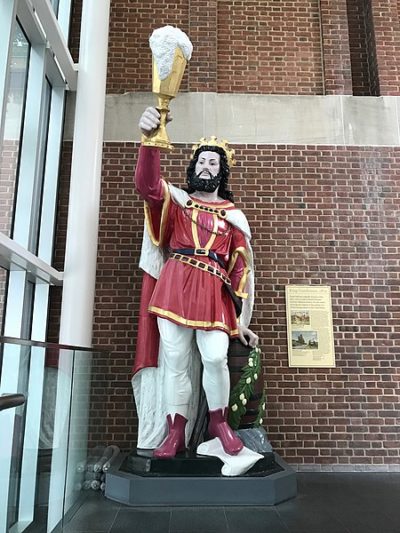The site contains a historical marker with the following inscription:
King Gambrinus originally stood in a niche above the door at John Frederick Wiessner and Sons’ Baltimore brewery. It is the earliest surviving zinc sculpture of this popular icon of the brewing industry in the United States.In the second half of the 19th century most of the immigrants coming to Baltimore on the new steamship lines were German-speaking. This German-American community supported several German-language newspapers, joined German clubs, held masquerade balls, picnics, sporting events, operas, and brewed beer. John Frederick Wiessner, the son of a German brewer, arrived in Baltimore in 1853 and opened a brew house in the 1700 block of North Gay Street ten years later. In 1887 the company expanded and built a new brew house, which still stands at 1701 North Gay Street. At the time, this building, with its elaborate brickwork and tall central tower, was one of the largest modern breweries in the state. J. F. Wiessner and Sons Brewing Company closed due to prohibition (1920-1933) in 1924.
The American Malt Company purchased the operation in 1931 and produced malt until the repeal of prohibition two years later. After prohibition, the company reorganized as the American Brewery, began brewing beer. King Gambrinus was moved across the street to the brewery’s beer garden and it became a local landmark. During the 1960s, the statue feel into disrepair, and Kenneth DeFontes, Sr. a truck mechanic at American Brewery, was entrusted to put it back together. It was later moved in front of the brew house where it stood until the brewery closed in 1973. In 1976 King Gambrinus was the centerpiece of the Smithsonian Institution’s Arts and Industries Building exhibit, 1876: A Centennial Exhibition.


